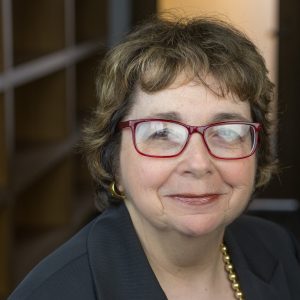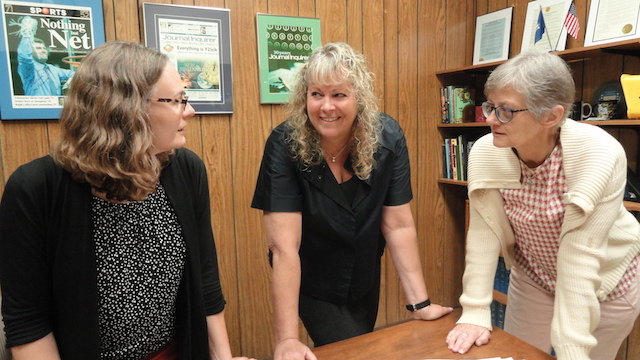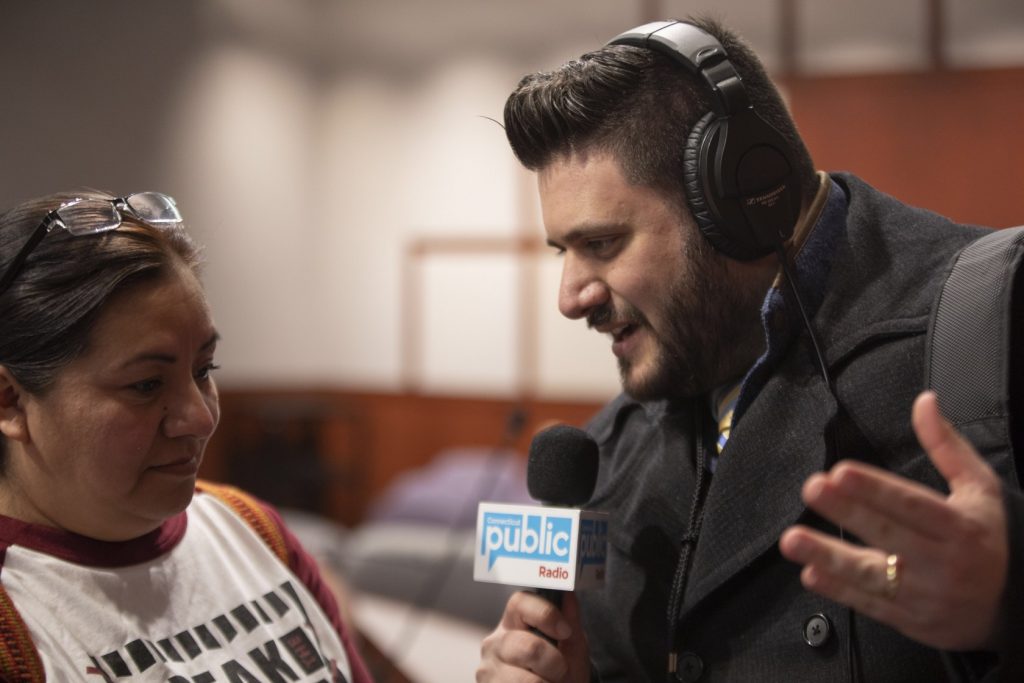Story and video by Michelle Kalupski
Cruising around in a silver Toyota Camry through Brooklyn Park, Minnesota, blasting Whitney Houston on the stereo, Taylor Anderson smiles brightly knowing that she earned this car by running her way to a college scholarship.
Anderson always knew that the goal of a college scholarship was attainable since both her parents were athletes.
“There is no way I am failing. I was born an athlete, whether I liked it or not,” Anderson said.
Her parents, Melvin and Lisa Anderson, used bribing as a tool to motivate their children to receive Division 1 college scholarships. If you earned a D1 scholarship, you will get a car, her parents told them.
Junior year of high school was Taylor’s break out year for running track when she got the attention of colleges across the country. As a high school junior, Taylor ran a 11.71 in the 100-meter dash, winning the state championship and breaking the Minnesota state record.
Before the race, her mom told her, “You’ll get a car if you win and get a college scholarship.” In an interview after the race, Taylor told the local newspaper, “I just won a car!” “Bribing works in the family.”
Melvin and Lisa Anderson both attended the University of Minnesota: Melvin played football and ran track, and Lisa ran track. Melvin was drafted after college and played wide receiver for his hometown team, the Pittsburgh Steelers in 1987.
Eventually, the two Gophers had three kids: Isaac (28), Taylor (22) and Elise (20). All three children earned college scholarships and consequently each received a Toyota Camry.
“Both of my parents met at a track practice and they lived on and produced three Division 1 offspring,” Isaac Anderson said.
Isaac earned his car by playing football at the University of Wisconsin-Madison as a wide receiver. From 2006-2011 the Badgers were two time Big Ten Champions and played in the Rose Bowl in 2010 and 2011. After college Isaac was an undrafted free agent with the Washington Redskins and spent a season on the practice squad.
“I was the first example for my sisters to continue to listen to our parent’s advice,” Isaac said.
Taylor, senior co-captain at UConn, received a track and field scholarship. Younger sister Elise, received a track and field scholarship to Illinois State University, but recently transferred to UConn to join Taylor. Elise, a junior, has three years of eligibility left in track.
From the start Melvin and Lisa planned to have a family of athletes.
“For us as parents, we are ecstatic to have them both running on the same team. It was great to drop both kids off at the same school,” Melvin said.
Due to their past experience, Melvin and Lisa were able to create a tradition for their children by setting them up to go to the next level in athletics and academics, Melvin said.
“Thoroughbred Andersons was a nickname given to our family by our father Melvin Anderson,” Isaac said.
When the Anderson children were young, their parents stressed the importance of schoolwork.
“Growing up, Taylor, Elise and I were taught athletics and academics were equally important. We were taught to dedicate the same time, effort and intensity to our sport as we did toward our academics,” Isaac said.
Although it may appear like the Andersons are only concerned about athletics, they know there is much more to life than that.
“It’s not about all athletics. I am more worried about them making connections and using their resources at UConn to springboard their careers,” Melvin said.
At UConn, Taylor and Elise both specialize in the 60 meter, 100 meter and 200 meter sprints, just like their mom.
Growing up, Taylor dabbled in many different activities such as dance, basketball, tennis, gymnastics and karate.
“Every other sport was to get ready for track,” Taylor said. “It’s like cross training year-round.”
Taylor’s fate to run track was predestined, since her father is a track coach and both of her parents ran track.
“I kind of came out of the womb running track. I had the big ole’ t-shirt on just running and smiling,” Taylor said.
Her father has coached Taylor and her siblings throughout their careers.
College track coaches did not have a conflict with the family coaching effort. Melvin founded Track Minnesota Elite, a leading youth track and field program in the United States, that has sent 90 percent of its kids to run in college.
“There is a difference between a parent that just ran track in college and someone that has been coaching for 20 years,” Melvin said. Some coaches, he said, can kill careers of young athletes.
“In Minnesota and other places you have coaches that are only concerned about something like winning conference, but are not concerned about developing the individual talent to be a collegiate athlete,” Melvin said.
These types of coaches are a big reason why Melvin coached his kids before they got to college.
“My father believed in career killing coaches, so he took it upon himself to coach us in our sports throughout our high school careers. If he could have coached us in college, he would,” Isaac said.
Ultimately, he produced athletes that coaches would appreciate.
“Overall, they appreciated the polished athlete that they got and the polished person that they are,” Melvin said.
Her father’s system paid off for Taylor.
A multi-sport athlete in high school, Taylor was receiving interest from schools such as Dartmouth, Nebraska and William and Mary for basketball after her team won three straight high school basketball championships with her as a point guard.
Essentially, Taylor had to choose between a track scholarship or basketball.
“That was the hardest decision of my life. I could have gone with basketball, but track is where my heart is,” Taylor said.
Taylor’s love of track has lead her to many successes so far in her collegiate career.
She looks up to USA past Olympians, Allyson Felix and Sanya Richard Ross. Taylor also looks up to former track team member, Trisha-Ann Hawthorne, who taught Taylor how to get off the block quicker.
However, just like her role models, Taylor has created her own unique racing styles and rituals.
Taylor always wears white USA socks for finals and blue USA socks for prelims. She also always wears a navy blue Nike sports bra, with another red Nike sports bra on top and her Nike spandex for prelims and changes to Nike spanx for finals.
Taylor also listens to the same 200 song playlist she created for every race, which includes one of her favorites, “New Level” by A$AP Ferg and Future.
All of these pre-race rituals help Taylor get into a competitive zone. Once Taylor steps on the blocks, she receives an “adrenaline feeling” that gets her mind to say “alright, it’s go time.”
As a junior, that adrenaline helped Taylor achieve her greatest accomplishment at UConn when she ran a personal best of 11.47 in the 100-meter dash to become the 2016 American Athletic Conference outdoor champion last May.
Taylor ran on a broken toe all last season when she won the 2016 AAC title because she didn’t have time to get surgery. She has also pulled both of her hamstrings.
Although this was a major accomplishment, Taylor doesn’t feel like she has achieved anything significant.
“If I make it to Nationals and I place top eight, then I have done something. But until I get there, I haven’t don’t anything. I just won conference,” Taylor said.
This mindset to never become complacent was instilled by Taylor’s parents, as confirmed by her brother.
“We were taught to stay humble and to not allow success to stop your grind,” Isaac said.
Taylor has some very lofty goals for her senior year and beyond. She hopes to leave UConn with a “bang” this season.
She has her eyes on shattering some school records this year, which would require her to run an 11.2 in the 100 meter and a 22.8 in the 200 meter, dropping .27 in the 100 meter and .9 seconds in the 200 meter.
Additionally, Taylor hopes to defend her outdoor AAC title in May 2017 and to win the indoor title in February 2017.
Taylor also aspires to place in the top eight at the NCAA National Championships in both indoor and outdoor.
She has been trying to up her training level every single year, “but this is just the max out, this is it,” she said.
But, Taylor’s biggest goal has nothing to do with her achievements, but with her health.
“I have to stay injury free, that is my biggest goal, just stay injury free,” Taylor said.
She views her injuries as just little bumps in the road.
“I don’t think injuries have held me back; I think they just postponed some of my training,” Taylor said.
In order to obtain their goals, Taylor and Elise trained every day this summer with brother Isaac, who is a trainer for Maximum Impact training in Minneapolis and is a head strength and conditioning coach for the Blake School Bears in Minnesota.
The system includes flipping and throwing tires and pushing the prowler, a weighted sled for athletic training, to name a few. Also, Isaac introduced his sisters to “fusionectis,” which is a technology-training based tool that identifies an athlete weaknesses and helps to create a plan to correct muscular imbalances.
“This summer was dedicated to improving their weakness and training them how Olympic athletes train,” Isaac said.
Isaac’s training this summer also focused on core stability, proper sprinting and jumping mechanics, and increasing their mechanical efficiency.
“I wanted to compliment what their coaches were already doing and provide them with my expertise on what was missing or where we can progress,” Isaac said.
Athletic success and training are truly a family effort with the Andersons. This really became clear in the summer months.
“It was lots of fun and a good bonding time for our family,” Isaac said. “We made several training videos and memories.” Taylor and Elise were “literally training in our backyard,” Taylor said.
Additionally, in order to keep the girls motivated, their mother would say things such as, “Oh, I don’t see you training, so you must not want to be good,” Taylor said.
For Taylor and Elise, track and field hopefully won’t end after college. Both have their eyes on the Tokyo Olympics in 2020.
“That would be the biggest achievement,” Taylor said.
Clive Terrelonge, Associate Head Coach for the UConn track team, was a two-time Olympian for Jamaica in 1992 and 1996, making him a great mentor to help the sisters reach their Olympic dream.
They have several motivational quotes and pictures of the Olympic Rings in each of their different Hilltop Apartment bedrooms in order to remind themselves of their goals.
The Anderson family is Presbyterian Christian, and religion plays a major role in Taylor’s life.
Taylor’s personal favorite quote is from Philippians 4:13: “I can do all things through Christ who strengthens me.”
After hard work, Elise knows that, “it’s all in God’s hands from there.”
“I run for God. He blessed me with the ability to run track and be a great athlete,” Taylor said. “God looks out for me while competing. I know he’s protecting me.”
A constant reminder of this is a quote on Taylor’s wall, “With God all things are possible.”
Taylor is a human development and family studies major with a cumulative 2.8 GPA.
“It’s called student-athlete, not athlete-student. I think that is what people are confused about. You didn’t come all the way here to just fail out,” Taylor said.
While Taylor aspires to continue with track for as long as her body allows her to, she knows that one day it will end.
“I want to work with kids for sure because kids are the future. Who else would you work with?” Taylor said.
Taylor loves giving back and wants to save the world, according to her dad.
“I think that giving back and looking out for others is in our blood,” Melvin said.
Taylor doesn’t anticipate returning to Minnesota, because it is just too cold there. She has her eye on places like North Carolina, Atlanta, and California.
But, first Taylor has her eye on running her way to the NCAAs this year.



 Al-Arshani works a late shift on the West Coast aggregating and doing original reporting on stories unfolding around the globe. She is fluent in Arabic.
Al-Arshani works a late shift on the West Coast aggregating and doing original reporting on stories unfolding around the globe. She is fluent in Arabic. Brone is working toward her master’s degree in journalism. During the pandemic, she’s been writing stories from Middletown for the Norwich Bulletin.
Brone is working toward her master’s degree in journalism. During the pandemic, she’s been writing stories from Middletown for the Norwich Bulletin.
 Fountain researches and assigns stories for Boston’s CBS affiliate television station.
Fountain researches and assigns stories for Boston’s CBS affiliate television station.













